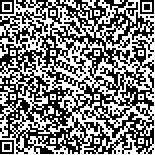下载中心
优秀审稿专家
优秀论文
相关链接
摘要

为了实现地物精准分类,需要有效地提取与分析高光谱遥感图像中丰富的空-谱信息。提出一种适用于高光谱遥感图像分类的变异系数与卷积神经网络相结合(CV-CNN)的方法。这种新方法引入变异系数的思想来衡量高光谱遥感图像不同波段之间的相似性和差异性,从而提出类间变异系数(CVIE)和类内变异系数(CVIA)的概念。通过计算(CVIE)2/CVIA的值来剔除高光谱遥感图像中的低效波段,然后提取每个像素的空-谱信息,并对其进行2维矩阵化操作,转化为便于卷积神经网络(CNN)输入的灰度图像,最后采用自行构建的适合于高光谱遥感图像分类的CNN模型进行分类。Indian Pines和Pavia University两组数据的实验结果表明,该方法在两种数据集下的总体精度分别达到98.69%和99.66%,有效地改善了高光谱遥感图像的分类精度。
Hyperspectral remote Sensing Images (HSIs), which contain rich spectral and spatial information, are important in the precise classification of earth objects. However, HSIs are usually highly dimensional and non-linear, and they contain large amounts of data. These characteristics increase the difficulty of data processing and bring about the Hughes phenomenon. Conventional methods such as Neural Networks (NN) and support vector machine have solved these problems by reducing the dimensions of HSIs with PCA, ICA, or MNF. Although these methods are effective in the classification of HSIs, they may cause information loss in the original data. Therefore, improving the accuracy of HSI classification with inadequate data is difficult. Recently, deep learning method, especially Convolutional Neural Network (CNN), has achieved remarkable performance in many fields. Therefore, the application of CNNs to HSI classification shows immense potential.To avoid the Hughes phenomenon and improve the accuracy of his classification, this study proposes a Coefficient of Variation-Convolution Neural Network (CV-CNN) method for the classification of HSIs. After the calculation of the Coefficient of Variation of the IntrA-class (CVIA) and the Coefficient of Variation of the IntEr-class (CVIE) of each band, the bands with low (CVIE)2/CVIA values are excluded. Then, a target pixel with the spectral information of its eight neighbors is organized as multi-layer spectral-spatial information. The spectral-spatial information of the target pixel should then be converted into matrix form. The two-dimensional image suitable for the input of CNN was subsequently obtained. Furthermore, a seven-layer CNN model was constructed with two convolution layers, two max-pooling layers, two full-connection layers, and one softmax layer. Using the seven-layer CNN can effectively improve the accuracy of HSI classification.Experiments were conducted on the Indian Pines dataset and Pavia University dataset to evaluate the performance of the presented CV-CNN method. The results are as follows:(1) Compared with the method that only considers spectral information for HSI classification, the use of spectral-spatial information can actually improve the accuracy of HSI classification.(2) Compared with other CNN methods, the seven-layer CNN model with no band removed can increase the overall accuracy by 2.61% for the Indian Pines dataset and 0.04% for the Pavia University dataset.(3) Based on the same seven-layer model, the experiments show that the classification of HSI with poor bands excluded shows increased accuracy from 97.9% to 98.69% for the Indian Pines dataset and from 99.6% to 99.66% for the Pavia University dataset. This outcome verifies the validity of excluding poor bands on the basis of the CV method.(4) Based on the same seven-layer model, the experiments show that the CV method, compared with the PCA and MNF methods, can increase the overall accuracy by 1.38% and 0.44%, respectively, for the Indian Pines dataset and by 3.26% and 1.83%, respectively, for the Pavia University dataset.The CNN model developed in this study and the method of removing poor bands with the CV technique can improve the accuracy of HSI classification.

